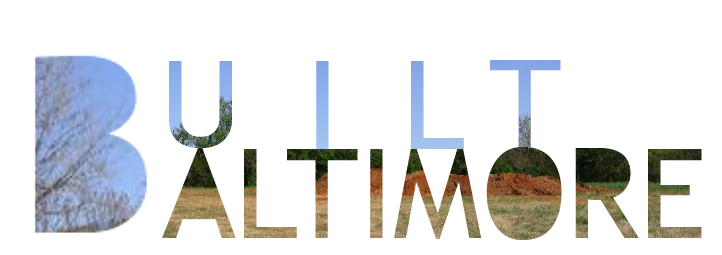I wanted to write a quick post about the 'urban stoop'--the small stairway used both to reach the entrance of a city dwelling and as informal social stage--before 'stoop culture' dries up again for the year.
Baltimore has thousands of stoops (on account of her thousands of row homes), and as a result of this fact, is historically well known for its 'stoop culture'--the culture of interactions taking place between friends, citizens and strangers as they sit on their stoops or walk by on the sidewalks.
As the colder weather arrives and people are pushed indoors, the streets start to revert to an emptier state and I am caught thinking about the emptying stoops and reflecting on their peculiar value to a neighborhood.
 A stoop.
A stoop.The stoop asks interesting questions about the way a buildings design influences the social interactions that can occur around it.
If there are utilized stoops, there are 'eyes on the street'. A neighborhood is lively and safer. Perhaps, though, residents want more privacy or more comfort? Porches offer these these qualities more abundantly, but because they are more withdrawn from the street, create less safety, in theory.
A stoop seems better than a porch at catalyzing social interaction and maintaining community safety when a certain level of safety is already present, and probably a little worse (than porches) when there's little or no pretext of street safety.
The stoop is an interesting element to consider as it applies to the concept of New Urbanism--the renewed interest promoting, creating and living in walkable, mixed use (dwellings, businesses and services in close proximity) urban neighborhoods.
What kind of social environment will people who want a 'new urbanism' be interested in? Will they want stoops? Will they sit outside or people watch? Or will they want to dash down the steps to their waiting smartcars?






 A collection of porch stairs and stoops from around Charles Village, Baltimore. Baltimore is known for its large supply of stoops.
A collection of porch stairs and stoops from around Charles Village, Baltimore. Baltimore is known for its large supply of stoops.This apartment building on Calvert street exemplifies one way it can go. It features a sort of modified stoop--pretty much too narrow to sit on and facing the wrong way-- useful only as a way to get in and out.
View Larger MapHeres another view, from the alley, showing how the straighter, wider stoops only face one another inside the protective courtyard and fence. Why not just build a porch?
Who is going to sit on these stoops, if anyone? There are no people, buildings or traffic to watch inside a courtyard.
Perhaps the people who live here don't have time to watch anyone. Perhaps there are no nearby stores, or little street traffic anyway. I wonder how this building development has and will continue to impact it's surrounding neighborhood.
I don't want to come across as 'pro' or 'anti' stoop; only to consider the wide-ranging effects of a minor design decision.
View Larger Map








